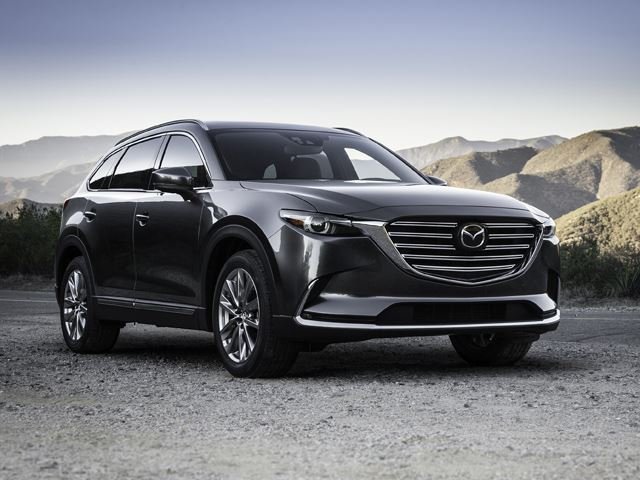We got to drive the former in San Francisco and saw the latter in the metal earlier this year at the 2016 New York Auto Show. We can say for sure that the CX-9 is targeting the luxury segment, with the top-tier “Signature” trim equipped and priced appropriately. And although we haven’t gotten into the MX-5 RF it does exude an air of luxury.
This luxury vibe comes courtesy of the Miata’s new targa top design. Once upon a time targa tops weren’t so rare, but nowadays they are basically only seen on Porsches with high price tags. Outside of the top the MX-5 RF just looks more grown up than the convertible version. If these two cars weren’t a dead giveaway of Mazda’s intentions to become a player in the luxury world then maybe you should check out its new website. I was sent an email by Mazda instructing me to give it a look. The email itself was nothing special but part of one sentence caught my eye. The redesign was done in part “to align with Mazda’s move to the near-premium landscape.”
Examining the two sites side by side, courtesy of the Wayback Machine, you can see that the new MazdaUSA.com is a lot cleaner. The new site tout’s the design and performance capabilities of Mazda’s cars. Unlike the old site you aren’t immediately bombarded with the automaker’s full lineup once you hit the bottom of the homepage. It’s not as busy as Lexus’ homepage or as Spartan as Infiniti’s. I like it and think it aligns well with the brand’s new direction. Speaking of, what the hell does “near-premium” even mean? It definitely doesn’t mean luxury. That’s not to say that Mazda can’t build a luxury car. The issue with using the word luxury is one of branding.
Hyundai has learned the hard way that you can’t build a reputation as an affordable automaker and then automatically start trying to sell luxury cars for $50,000 a pop. It doesn’t work like that. You either need a new sub-brand or some clever word play, like near-premium. Remember that Mazda is a tiny independent automaker and as such it needs to be smart with how it allocates its resources. A sub-brand is out of the question, but a new top trim level, improved cabin quality and a redesigned website are all in the budget. The hard part for Mazda will be pricing its new near-premium models. The 2016 Mazda CX-9 is bound to give some people sticker shock, especially the $45,000 Signature trim.
Pricing for the MX-5 RF hasn’t been announced, but I’m curious to see where it lands. The Sport model starts at $24,915, and the next option up is the performance-oriented Club at $28,600. The MX-5 Grand Touring rounds out the list at $30,065. Could a base MX-5 RF settle between the Sport and Club convertible? If so, where at and what would the Grand Touring trim come in at? Also, would Mazda bust out its Singature trim level for its new roadster? Remember that part of convincing people that your cars are higher quality is pricing them accordingly. And while Mazda’s are known for drivability we can’t say for sure if consumers buy them for that reason or because they are competitively priced.
The move to near-premium (almost-luxury?) is about surviving and staying independent. Mazda doesn’t sell a ton of cars compared to its competitors. That's why it needs people to opt for higher trim levels, or start paying more for its cars period. The way to do this is by adding luxury. It's a bold plan that could very well work, provided Mazda remembers what makes its cars special in the first place. That would be drivability, or as Mazda's slogan says, "Driving Matters."



